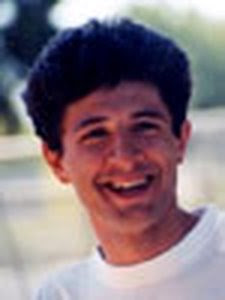 Institution: University of British Columbia. Program: Quantum Materials Program. Appointment: Scholar. Email: damascelli@physics.ubc.ca. Web site: www.physics.ubc.ca/damascelli Andrea Damascelli is an Assistant Professor in the Department of Physics and Astronomy at the University of British Columbia. He was previously a Post-doctoral Fellow in the Physics Department of Stanford University and then a Research Associate at the Stanford Synchrotron Radiation Laboratory. In 2002, he came to UBC, where he holds a Canada Research Chair in Electronic Structure of Solids. Dr. Damascelli received his B.Sc. from the State University of Milan in 1994, and his Ph.D. from the University of Gröningen in 1999. He joined CIAR's Quantum Materials Program in 2004. | A team of University of British Columbia researchers has developed a technique that controls the number of electrons on the surface of high-temperature superconductors, a procedure considered impossible for the past two decades. Led by Physics Assoc. Prof. Andrea Damascelli, the team deposited potassium atoms onto the surface of a piece of superconducting copper oxide. The approach allows the scientists to continuously manipulate the number of electrons on ultra-thin layers of material. The details are published in the journal Nature Physics. Superconductivity – the phenomenon of conducting electricity with no resistance – occurs in some materials at very low temperatures. High-temperature superconductors are a class of materials capable of conducting electricity with little or no resistance in temperatures as high as -140 degrees Celsius. "The development of future electronics, such as quantum computer chips, hinges on extremely thin layers of material," says Damascelli, Canada Research Chair in the Electronic Structure of Solids. "Extremely thin layers and surfaces of superconducting materials take on very different properties from the rest of the material. Electrons have been observed to re-arrange, making it impossible for scientists to study," says Damascelli. "It's become clear in recent years that this phenomenon is both the challenge and key to making great strides in superconductor research. |
The superconductors Damascelli’s team experimented on are the purest samples currently available and were produced at UBC by physicists Doug Bonn, Ruixing Liang and Walter Hardy.
Part of the study was carried out at the Advanced Light Source synchrotron in California. In the future, the design and study of novel complex materials for next-generation technologies will be carried out at the Quantum Materials Spectroscopy Center currently under construction at the Canadian Light Source in Saskatoon under Damascelli's leadership. ###
Contact: Brian Lin brian.lin@ubc.ca 604-822-2234 University of British Columbia
Tags: Nano or Nanotechnology and Nanotech














No comments:
Post a Comment